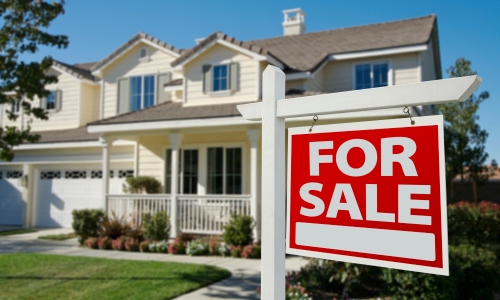Existing home sales dropped in March according to the most recent report from the National Association of Realtors (NAR) with the Northeast being the only U.S. region seeing an increase in sales, breaking a four-month slump. Year-over-year (YoY) sales have decreased in all regions, however.
“Though rebounding from cyclical lows, home sales are stuck because interest rates have not made any major moves,” said NAR Chief Economist Lawrence Yun.
“There are nearly six million more jobs now compared to pre-COVID highs, which suggests more aspiring home buyers exist in the market.”
Existing Single Family Home Sales Drop 4.3% in March
On average, home sales for single family homes, townhomes, condominiums and co-ops fell 4.3% from February to a rate of 4.19 million and 3.7% YoY.
Exclusively single-family sales dropped 4.3% from February and 2.8% from the previous year. Condos and co-ops dropped 4.9% from the prior month and 11.4% YoY.
The news comes following similar reports in the homebuilding sector, which found new construction on single family homes dropped heavily in March, contrary to analyst predictions.
Despite the drop off, however, homebuilders remain largely unfazed by the data, stating that demand still sits at a comfortable level for new homes, which has become the primary method people have begun to turn to buying.
This is further corroborated by the new residential sales numbers for March, which rose 8.8% from February and is up 8.3% from March 2023.
The lack of money being spent on home purchases also points to potential strength in the renovation market, as noted by the National Association of Homebuilders in its Remodeling Market Index.
Total housing inventory at the end of March was reportedly 1.1 million units up (4.7% from February and 14.4% from one year ago) with unsold inventory sitting at a 3.2 month supply.
Affordability Remains a Major Dampening Force in the Market
Prices for all housing types in March rose 4.8% YoY to $393,500. Single families increased 4.7% YoY to $397,000 and condos and co-ops increased 5.8% YoY to $357,400
First time buyers accounted for 32% of all sales in March, up 6% from February with second-time buyers and individual investors purchasing 15% of homes, down 6% from February.
All cash sales accounted for 28% of transactions in March, which is down from 33% in February, but up from 27% March 2023. Meanwhile, foreclosures and short sales account for 2% of all sales.
Home sales in the Northeast climbed 4.2% from February to an annual rate of 500,000 in March, though home sales were still down 3.3% YoY. The Midwest, South and West all declined by 1.9%, 5.9% and 8.2% respectively from February heading into March, with YoY home sales down 7.5%, 3.4% and 6.7% respectively.
Of course, mortgage rates continue to be the primary determining factor behind housing affordability. As of April 11, the 30-year fixed-rate mortgage averaged 6.88%, setting it .6 percentage points higher than it was last year.
According to a report by Redfin, this means that the yearly salary needed to afford a median-priced home in America now sits at $114,627, up 15% from what was required last year, and up more than 50% since the beginning of the pandemic, with metro areas seeing the biggest surge in prices, particularly down in Florida.

















